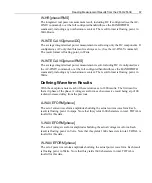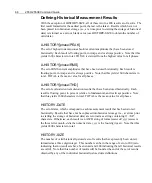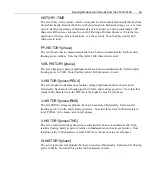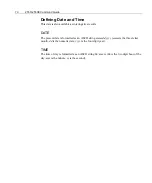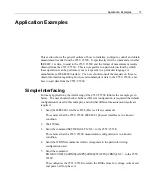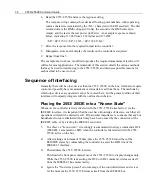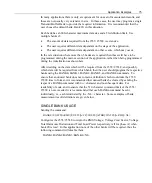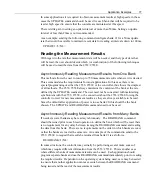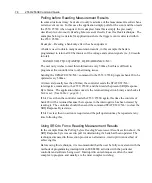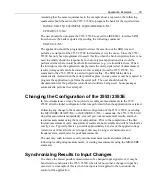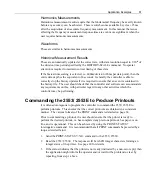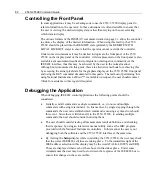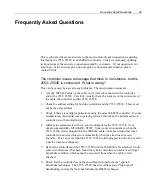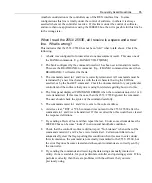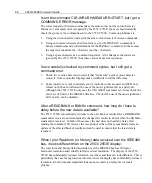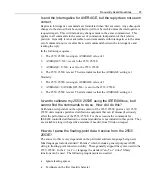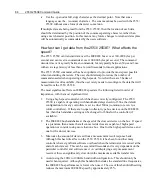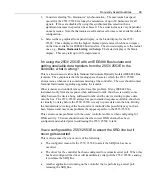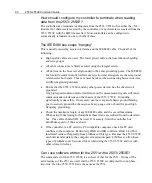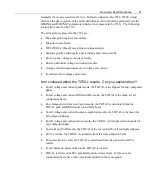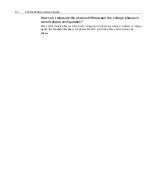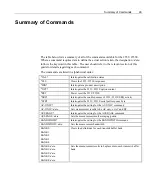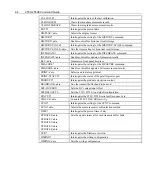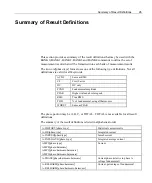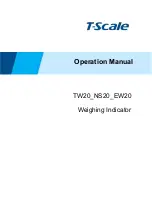
80
2553/ 2553E Command Guide
The action of the MEASURE=START<NL> or MEASURE=1<NL> commands is the
same, whether the 2553/ 2553E was already taking measurements, or not. When sending
this command (either form), the 2553/ 2553E will stop all measurements momentarily,
clear all previous measurement results, and then restart measurements. This process
takes a very short period of time (less than 1ms). The first measured results available do
not use any programmed measurement result averaging, thus are available as soon as
possible with full accuracy. By sending this command at the same time as the change in
input signals, the user can ensure that the fastest possible response is taken by the 2553/
2553E.
For the fastest possible response, the UPDATEn command for the bank(s) used should be
set to the shortest update interval.
The response is not the same for all measurement result types. These are discussed below
–
Peak and Peak Inrush Results
Although cleared by the MEASURE command, these data are updated almost
immediately following starting measurements.
In most cases there would be no requirement to use the MEASURE command to
synchronize for these measurement results alone, since they are always updated at the
fastest possible rate (virtually in real time).
Full Bandwidth Amplitude Measurements
RMS, DC and similar measurements follow the time scales discussed previously. It is
often advantageous to synchronize using the MEASURE command if these measurement
results are desired at the fastest possible rate. There is some improvement in speed if the
user maintains the voltage signal to the 2553/ 2553E when switching power to the load,
as the 2553/ 2553E can maintain the frequency measurement in that situation. Thus
switching the load power in the wiring between the 2553/ 2553E and the load offers the
fastest approach.
Frequency Measurements
Internally, frequency measurements (usually configured to measure the voltage signal)
are unaffected by any configuration changes or by the MEASURE command. The
frequency measurement available to the interface is a “
latched
” version of this internal
frequency measurement. In this manner the user readable frequency measurement
becomes available after approximately 4 cycles (or 50ms, whichever is longer) of the
applied voltage waveform. If the voltage waveform is removed, or significantly altered,
then the frequency result can take considerably longer to settle (up to 10 times longer or
more), particularly if the DC content of the voltage signal is significantly altered. If
possible, the user should consider maintaining the voltage signal at all times.
Summary of Contents for Xitron 2553
Page 1: ...IEEE488 COMMAND GUIDE 2553 2553E Three Phase Power Analyser ...
Page 2: ......
Page 10: ...10 2553 2553E Command Guide ...
Page 38: ...38 2553 2553E Command Guide ...


